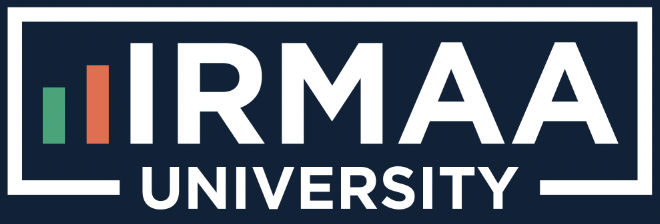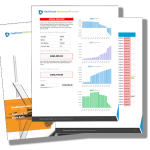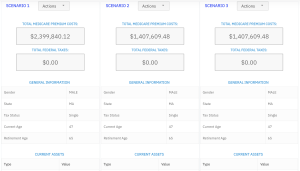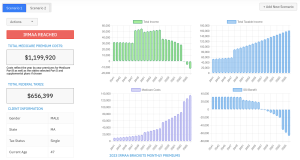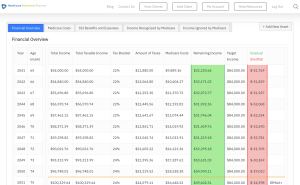ever felt like navigating the maze of social security taxes is akin to walking through a dense, foggy forest with no compass? You’re not alone. For many, understanding the ins and outs of these complex regulations feels just as bewildering.
The landscape changes yearly and 2023 is no different – it’s bringing us a new social security tax limit. Like catching that first glimpse of sunlight piercing through an overcast sky, I’m here to guide you out from under those towering trees of confusion.
This year brings important shifts for both employers and employees alike. With adjusted payroll taxes on deck and changes in retirement earnings test thresholds that could impact your golden years’ income stream—it’s crucial we take this hike together.
running shoes and let’s tackle this together. Whether Social Security benefits are on your horizon, or you’re a self-employed individual puzzled about where you stand, we’ve got your back.
Understanding the Social Security Tax Limit 2023
If you’re thinking ahead about your finances, staying informed of shifts in Social Security taxes is critical. In 2023, the maximum earnings subject to Social Security tax will see a substantial increase from $147,000 to $160,200.
This change impacts how much of an employee’s wage is subjected to the FICA tax rate. This is where our story gets interesting. The FICA rate continues at 7.65%, with 6.2% for OASDI limit 2023 and 1.45% for Medicare, despite the change in wage base limit or ‘wage cap’. But because of this hike in wage base limit or ‘wage cap’, more of your income could be taxed.
How the Increase Affects Payroll Taxes
The rise in social security wage base has some clear consequences on payroll taxes that you need to consider when setting aside funds for retirement benefits.
For starters, employers have higher payroll obligations due to their portion of Social Security and Medicare taxes increasing proportionately with each dollar earned above the previous year’s max until hitting the new ceiling – quite a mouthful.
In simpler terms: if you earn over last year’s limit but under the new one ($160k), then there are more wages that can be hit by these specific payroll deductions than before – something which might take a bite out of your paycheck unless adequately planned ahead of time.
Note:No matter what amount you make annually though,‘income tax’ always applies irrespective of the limits set forth here-.
Changes in Social Security Benefits in 2023
The upcoming year holds a considerable boost for Social Security and Supplemental Security Income (SSI) benefits. We’re seeing an increase of 8.7%, a significant leap that’s worth taking note of.
Retirement Earnings Test Thresholds for 2023
This rise directly impacts the retirement earnings test thresholds, which determine how much retirees can earn without affecting their benefit payments. The limits vary depending on whether you’ve reached your full retirement age or not, but they all adjust with changes to average wage levels.
A key point is that these thresholds are different if you haven’t yet hit what Social Security calls your “normal retirement age”. Stay informed of the yearly alterations if you haven’t attained your normal retirement age.
The upshot? Those monthly social security checks will be fatter. An increase of $146 is expected in the average monthly benefit, bringing it up to a total of $1,827 for 2023. That’s more cash every month.
In conclusion: understanding how factors like the social security tax limit play into your benefits picture isn’t just useful knowledge – it could mean extra dollars in your pocket.
Self-Employment and the Social Security Tax Limit
Walking the social security tax rope can be a daunting task for those who are self-employed. The OASDI tax rate for self-employment income in 2023 is 12.4%, according to Checkpoint’s Federal Tax Coordinator ¶A-6035. But don’t let that number scare you.
Tax Rates and Self-Employment Income
This might sound hefty compared to what employees pay but remember – as an employee, your employer pays half of your Social Security tax.
The twist? As self-employed, you take on the role of both employer and employee – thus resulting in a double hit with this increased rate. Hence the double whammy with this higher rate.
A little secret though: You only pay this on net earnings up to $160,200 in 2023 (anything above doesn’t count.). So if your business has been doing exceptionally well… kudos first off. Secondly, know there’s a cap to how much gets taxed for Social Security purposes.
The ‘Self-Employed’ Silver Lining
You may now be thinking: “But wait – isn’t that still quite high?” Well yes…but there’s some good news too.
Yer effecksive rate might be liss, since y’can subtract half o’ what ya pay when figurin out yer adjusted gross income on th’ federal tax return. And we all love deductions right?
Navigating Your Way Through Taxes…
No one said being self-employed was easy. Between managing expenses, marketing yourself or services/product & keeping clients happy, it’s quite the juggling act. Adding tax planning to this mix? Not a walk in the park.
But knowing your obligations and potential deductions can help you strategize better for the future.
The Social Security Tax Limit and Medicare
Many folks might not realize how closely linked the Social Security tax limit is to Medicare taxes. Realizing the importance of these two systems in providing protection for our health and financial security during retirement is critical.
Understanding the Additional Medicare Tax
Keep an eye on your wages if you’re making a considerable amount, as any sum above certain limits will activate the additional Medicare tax. Why? Because any amount exceeding certain thresholds will trigger what’s known as the additional Medicare tax. It’s not a game show scenario, but rather something more serious.
This is no laughing matter — exceeding certain thresholds can result in an additional 0.9% Medicare tax. This additional 0.9% tax kicks in when individuals earn over $200,000 or married couples filing jointly rake in over $250,000 annually. But don’t worry; this isn’t some new-fangled invention designed to trip up high earners.
This measure has been around since 2013 under the Affordable Care Act (ACA). Its aim is simple: fund improvements for healthcare services nationwide without straining low-income workers’ wallets.
A fascinating fact about Medicare’s Hospital Insurance (HI) program is that there has been no taxable maximum since 1993. Yep – Uncle Sam decided long ago that everyone chips into this crucial pot equally with their earnings above $400k per year also contributing at an increased rate of 1.45%. And if you’re self-employed? You’ll be paying double at a rate of 2.90%, but remember – half can be deducted come income tax time.
All these interlocking pieces make for one complex puzzle – so let’s get cracking together. Stay tuned as we delve deeper into understanding social security benefits increase alongside rising wage caps, tax rates and more.
Historical Trends in Social Security Tax Limits
If we look to the past, there has been a consistent progression of social security tax limits as average wages have risen. Why? Because it’s tied to increases in average wages. The Social Security Administration, which keeps tabs on this stuff, adjusts it every calendar year.
Contribution and Benefit Base Over Time
In 1975, for instance, the wage cap was just $14,100. Fast forward to 1990; it shot up to $51,300. This trend didn’t slow down at all entering into the new millennium either.
The contribution and benefit base jumped from $76,200 in 2000 to a whopping $106,800 by 2010. It may seem like an earnings test for our wallets but these numbers simply reflect changes in average wages paid across America.
Come present day – looking ahead at projections for next year – prepare yourself because you might need some hospital insurance after hearing this (just kidding.). The projected figure for Social Security’s OASDI program in 2024 is expected to be… drum roll please…$168,600.
That’s right folks. Our historical content review shows us that there are no signs of stopping as we step into future years with bigger limits waiting around each corner.
This hike doesn’t mean more taxes per se; remember only your income below this limit will be subject to social security tax withholding while anything above isn’t taxed by Uncle Sam’s retirement fund (though federal tax laws still apply).
Read More about Contribution & Benefits here.
How Changes to the Social Security Tax Limit Impact Employers
The recent hike in the social security tax limit can leave many employers scratching their heads. This isn’t just a simple numbers game – it’s about understanding how these changes directly affect your payroll taxes.
The OASDI program is an essential element to comprehend the implications of the recent hike in social security tax limit. The OASDI tax rate for wages paid in 2024 stands at 6.2% for both employees and employers. (Social Security Administration) But with an increase in wage base, you’ll find that your contribution as an employer also increases.
Paying More Than Just Pennies
In essence, if you’re paying higher wages that exceed the new social security wage base of $160,200 (Checkpoint’s Federal Tax Coordinator ¶A-6035), then expect your overall payout towards social security taxes to go up as well.
Remember when we were kids trading baseball cards? Imagine each card represents a dollar of salary above the previous cap ($147k). Now imagine having 13k more cards but still wanting to keep all within one box – impossible. That’s kind of what’s happening here; except instead of baseball cards, we’re talking dollars.
A Little Planning Goes A Long Way
However, don’t be intimidated. It may seem like quite a pickle now but remember: proper planning helps mitigate such shocks. Start by reevaluating employee salaries and considering potential adjustments where necessary – think rearranging those baseball cards into another box.
By revising employee salaries, you can remain compliant with the new social security tax limit and achieve greater success for your business. And hey, who knows? Maybe this change might be the catalyst that drives your company to even more success.
Key Takeaway:
Adjusting to the new social security tax limit might feel like trying to squeeze more baseball cards into an already full box. But, just as reorganizing those cards can help, so can reviewing employee salaries and making necessary tweaks. With a little planning, you’ll stay compliant with these changes while keeping your business’s finances healthy.
Conclusion
As we’ve explored, the social security tax limit 2023 has significant implications for employers, employees, and self-employed individuals. The payroll taxes are adjusting to a higher wage base while retirement earnings thresholds are changing.
This year’s increase in Social Security benefits is noteworthy as well. Not only does it impact monthly payouts but also Supplemental Security Income (SSI). Remember that every dollar counts when planning your golden years.
If you’re self-employed, take note of the OASDI tax rate adjustments. Every change matters in determining your bottom line at the end of each calendar year.
The link between Social Security and Medicare is intricate but important – an understanding here could save future headaches with additional Medicare taxes or Hospital Insurance program details.
Finally, always remember history offers valuable lessons – historical trends give context to current changes and provide insight into potential future shifts in our social security system.
In conclusion, stay informed. Understanding these changes helps us better navigate financial landscapes now and plan effectively for tomorrow.
Table of Contents:
- Understanding the Social Security Tax Limit 2023
- Changes in Social Security Benefits in 2023
- Self-Employment and the Social Security Tax Limit
- The Social Security Tax Limit and Medicare
- Historical Trends in Social Security Tax Limits
- How Changes to the Social Security Tax Limit Impact Employers
- Conclusion
Streamlining the Medicare Surcharge Calculation Process.
Our Healthcare Retirement Planner software is designed to streamline the retirement planning process for financial professionals. By providing an efficient way to calculate IRMAA costs, our tool helps you save time and focus on other aspects of your clients’ retirement plans.
- Faster calculations: Our software quickly calculates IRMAA costs based on your client’s income and tax filing status, eliminating manual calculations and potential errors.
- User-friendly interface: The intuitive design of our platform makes it easy for financial professionals to input data and generate results with minimal effort.
- Data integration: Seamlessly integrate our calculator into your existing financial planning tools or CRM systems for a more streamlined workflow.
- Easy to Understand Reports: Export reports to easily share with your clients
- Tax and Surcharge Modeling: see how different types of income affects both taxes and your surcharges.
In addition to simplifying the calculation process, using our Healthcare Retirement Planner can also help improve communication between you and your clients. With clear visuals that illustrate how IRMAA costs impact their overall retirement plan, you can effectively convey complex information in an easily digestible format. This enables clients to make informed decisions about their healthcare expenses during retirement while ensuring they are prepared for any potential changes in Medicare premiums due to income fluctuations. To learn more about how our software can benefit both you as a financial professional and your clients’ retirement planning experience, visit the features page. Streamlining retirement planning processes can help financial professionals save time and resources, allowing them to focus on other areas of their clients’ needs. Automated calculation of IRMAA costs is the next step in streamlining this process even further.
